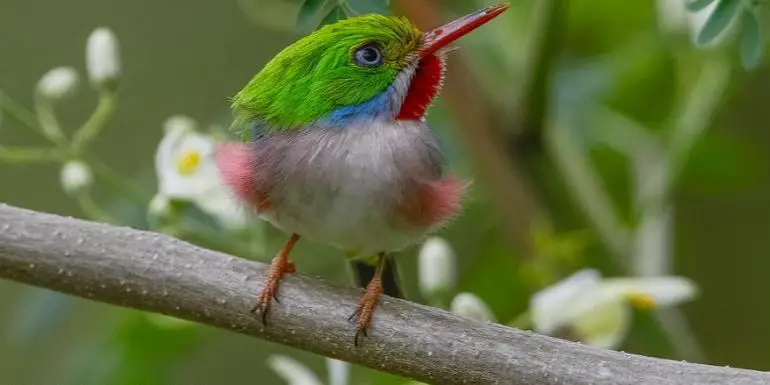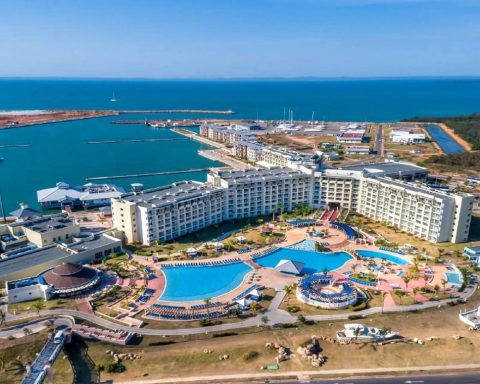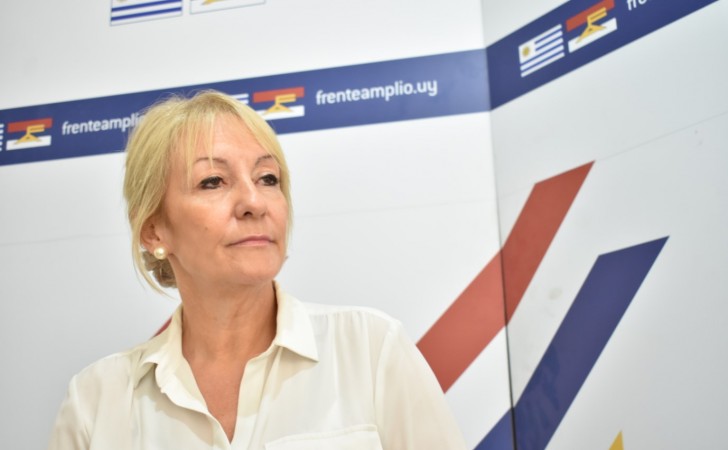MIAMI, United States. – Known as cartacuba or farting (multicolored todos), this endemic species of Cuba is a natural spectacle due to its bright colors and its particular charm. The bird, which inhabits all the Cuban provinces, is characterized by its preference for wooded spaces and areas of ravines and cliffs.
The cartacuba is one of the three emblematic species in Cuban ornithology, a distinction it shares with the tocororo and the zunzuncito.
The cartacuba is distinguished by the blue spots on the top and side of the neck. It is a tiny bird, only second in size to the hummingbirds, and its robust body and short tail do not exceed 106 millimeters in length.
Its long, flattened bill is characterized by its carmelite color above and red-orange below, a hue that can also be seen on its legs. The irises of its eyes are white, and it is known for its strict insectivorous diet. Interestingly, the cartacuba cannot survive in captivity, because its insectivorous diet cannot be replicated in a cage environment.
This bird, considered a gem of the Cuban avifauna, has a particularity that distinguishes it: the construction of tunnels some 250 millimeters deep in clayey soil ravines. At the end of these tunnels, in a larger chamber, it lays three to four white eggs. It also makes use of holes in rotten logs to nest.
When approaching its nest, the Cartacuba meticulously ensures that there are no intruders nearby, in an effort to protect its eggs and hatchlings. The incubation of these eggs varies between 11 and 13 days, a process in which both the male and the female participate.
Its song is a distinctive “to-to-to”, a sound that gives its scientific genre its name, all. It also has a peculiar sound that it produces with its wings, which could be a strategy to scare away nearby insects and facilitate their capture.
Cuba is home to more than 300 registered bird species, 26 of which are endemic, that is, they are only found in the Cuban archipelago. Therefore, the protection and management of ecosystems in these regions is essential to guarantee the preservation of these jewels of nature.















